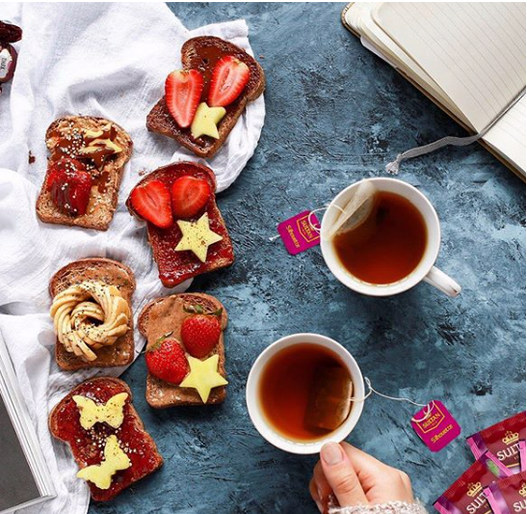FREE UK SHIPPING ON ORDERS ABOVE £15
3 FREE SAMPLES ON EACH ORDER

DELIVERY TO OVER 50 COUNTRIES
FREE UK SHIPPING ON ORDERS ABOVE £15
3 FREE SAMPLES ON EACH ORDER

DELIVERY TO OVER 50 COUNTRIES

Every country has a different way of celebrating and enjoying tea. In Morocco, tea is almost a ceremony, performed in the way the tea is brewed and poured into authentic Moroccan glass cups. But in England, it’s all about afternoon tea.

Whether you prefer sweet scones and cakes or savoury mini sandwiches and biscuits, English afternoon tea is one of the most popular things to do here as a tourist. And a favourite afternoon pastime, even when you’re not.
But where did afternoon tea come from and why do we love it so much? Here, we take a further look into this tea-loving English ritual.
Afternoon tea is a British tradition. Not to be mistaken for high tea, which we’ll take a little look at later.
Served around 4pm traditionally – although really anytime in the afternoon works – afternoon tea was created to bridge the gap between lunch and dinner. Time for a relaxing cup of tea and some small snacks to accompany.
Although once a routine thing, afternoon tea is now considered somewhat of a treat. And is served at hotels, restaurants and tea rooms as a luxurious and indulgent pleasure.
With a detailed background that links with afternoon tea, the main difference for high tea is that it is served later. Afternoon tea being enjoyed in the afternoon, obviously, was out of reach for those who were working. Therefore, high tea was the tea and meal portion of the day after work for those with jobs, and traditionally came along with heartier meals instead of cakes and sandwiches.

So, where did afternoon tea actually begin and why?
Tea drinking in England started to become popular and increasingly common as early as 1660. However, the concept of afternoon tea as a tradition didn’t become a ‘thing’ until the middle of the 19th century. Far after tea was first known, loved and enjoyed in the UK.
Afternoon tea was introduced by the Duchess of Bedford in 1840. When the Duchess started to become hungry around 4pm between lunch and dinner, she would ask for a tray of tea, bread and butter to be served. This habit of hers became something for which she would then invite friends and guests to join her.
During the late 1800s ladies had really started to catch on to the trend. They would start to dress up for the afternoon tea event, styling gowns for the occasion.
As the trend progressed, hotels began to serve tea at this time specifically with the menu increasing to sandwiches, cakes and scones with jam. From here, the English tradition evolved into what it is today.
Whether you’re recreating your very own authentically English afternoon tea at home or just stocking up on your favourite brews, remember to cash in on this weekend’s Sultan Tea offer. This weekend only, we’re offering 10% off on all our loose tea blends.
Browse the loose tea blends and choose from classic Ambar or super intense Assala or even opt for a flavoured loose tea with orange blossom or oregano. Get 10% off – this weekend only.
This item has been added to your cart